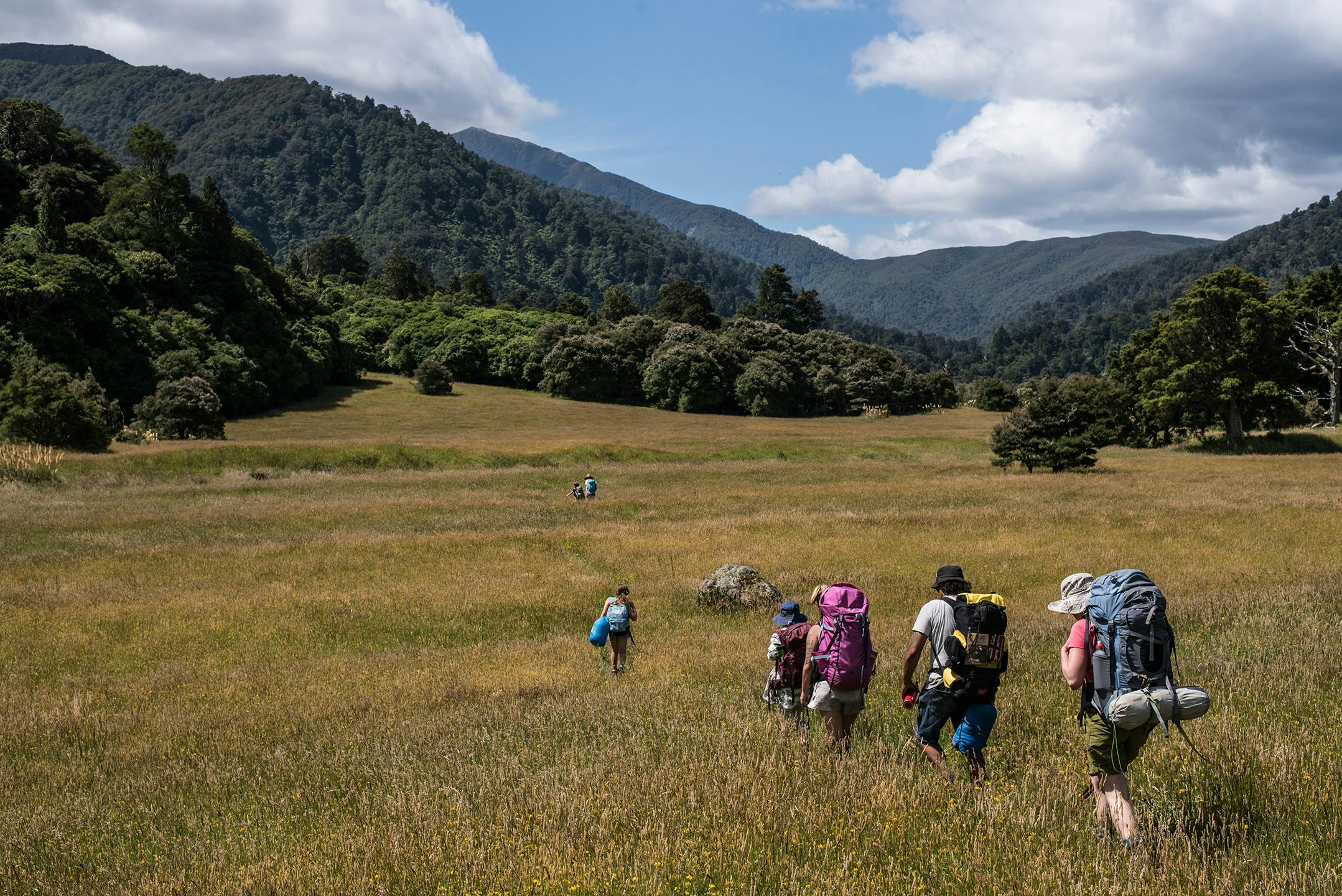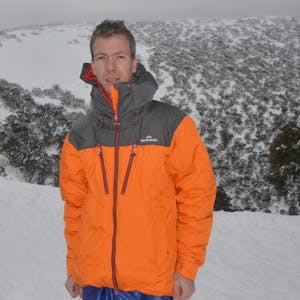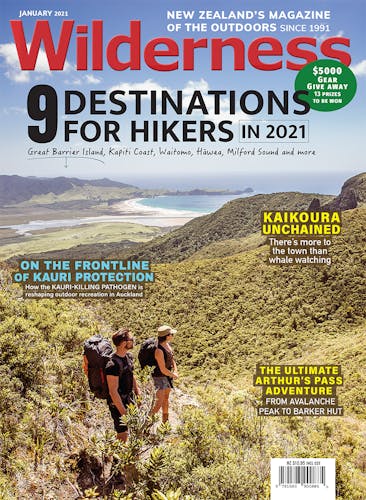On a trip to Totara Flats Hut in Tararua Forest Park, Ricky French unearths the unique geological and human history of the area as well as one man’s buried treasure.
We found the plastic barrel buried in the long grass near Sayer Hut. It was one of those 55 gallon drums (designed for shipping liquid food products) you see everywhere: in the back of warehouses, as rainwater containers, lashed together to make pontoons, but this was the first time I’d seen one buried in the backcountry.
There were 14 of us on this tramp, including six children. It was the largest party any of us had ever tramped with, spanning three generations of family and ages ranging from 10 to 65. I’m not sure if it was strength of numbers, but we seemed to be developing a knack of stumbling upon strange, half-buried objects and uncovering historical artefacts.
Wrestling the barrel free from the clutches of the grass, we stood it upright and opened the lid. Inside, it appeared to be nothing special – a cache of some sort. We carefully removed packets of food and other provisions. It held the standard tramping fare: noodles, baked beans, ropes and billies, a small bottle of rum. Someone must have stashed a few supplies to return to at a later date.
We started repacking the barrel before one of the kids picked up something truly remarkable. It was a front-page from The Evening Post, the Wellington daily newspaper that pressed its last copy in 2002. But this was no random front page. The full-page photo was one of the most recognisable images in history: New York’s World Trade Centre tower exploding in debris, like a volcanic eruption. The headline shouted America Under Attack. The date was September 12, 2001.
We suddenly got the idea to look at the use-by dates on the food. They all expired between 2001 and 2003. In the interests of the investigation, I opened the bottle of rum and took a swig. Twenty-six eyes stared at the newspaper, trying to comprehend why this famous front page was stashed in a plastic tub in the Tararua Ranges, undisturbed for nearly 20 years. Who put it there, and for what reason? Was it a time capsule? Or just a coincidence? And why had the person never come back? It was just one of the mysteries we would hope to unravel on a tramp where we would find the extraordinary in the ordinary, where relics of the past would be revealed time and time again and where we would make constant new discoveries in a place we thought we knew so well.
Totara Flats Hut is a popular weekend destination in the eastern Tararua Range. Accessible in a few hours from Holdsworth Road end or the Waiohine Gorge, the hut is a large, modern, lodge-type affair sleeping 26 people and nestled just above the Waiohine River, with swimming holes just metres from the front porch. It’s a favourite summer haunt for families and offers a variety of routes to the more rugged interior of the ranges, such as Neil Forks Hut at the foot of the Main Range and the famous Tararua Peaks. It’s also part of one of the range’s classic riverside tramps, from Holdsworth to Kaitoke, which spans 36km of the Waiohine and Tauherenikau rivers.
I’ve been coming to Totara Flats since I was a teenager. It’s a special place. The flats themselves are vast, grassy meadows on the western terrace of the Waiohine. Stands of totara and mānuka clump on the borders and the track meanders in a benevolent, dreamlike fashion, passing countless cosy camping spots and deep swimming holes. It’s one of the prettiest walks in a mountain range more known for its toughness than its beauty.
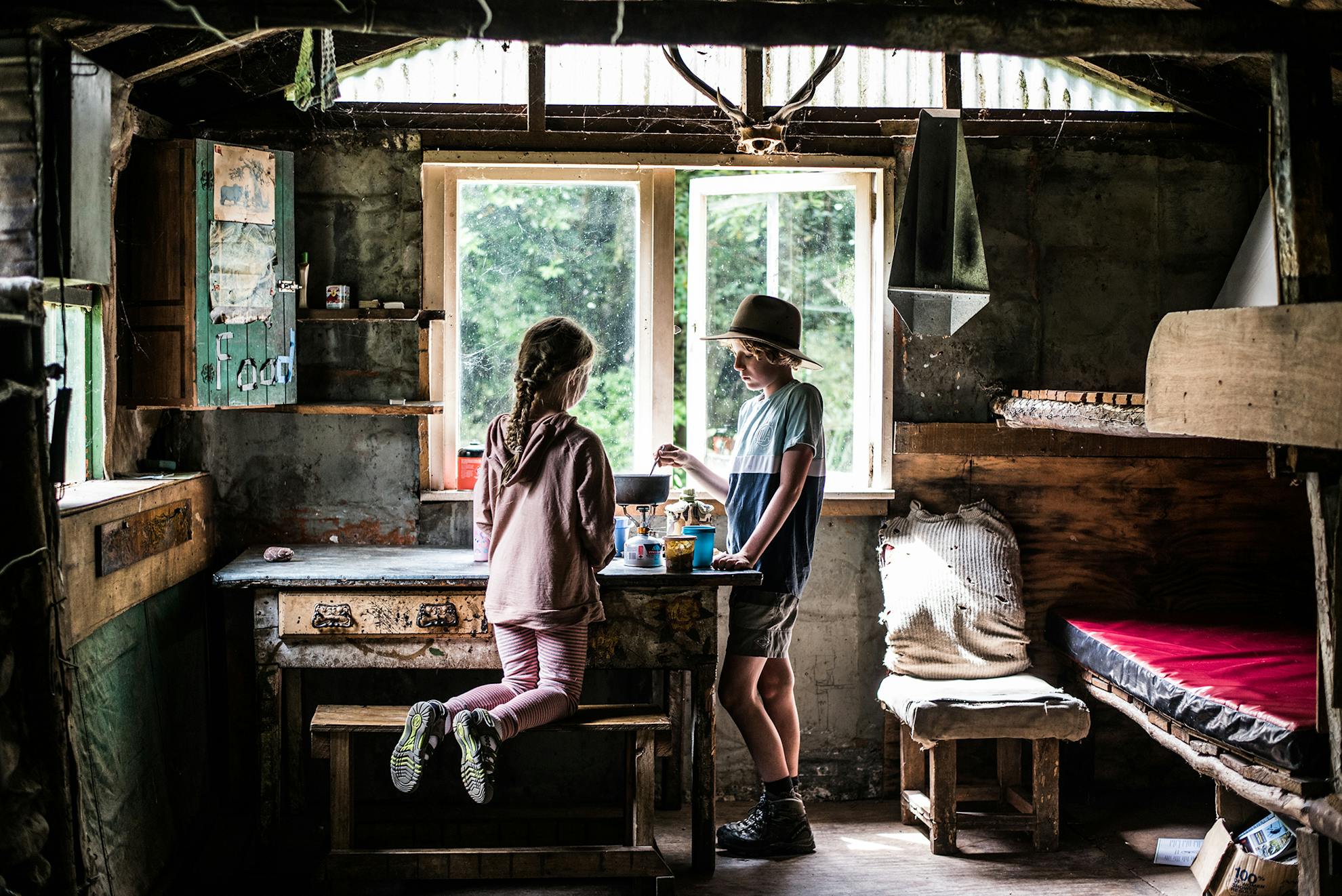
Several incarnations of Totara Flats Hut have stood, not always on the same spot. The first hut opened in 1948, not far from the location of the current hut, near the Waiohine’s confluence with Totara Stream and separated from the grassy flats by a short section of bush. The second hut opened in 1973 in a different position on the flats proper. I remember going there in the 1990s and thinking what a perfect location it was, wedged in a sheltered, lofted corner, the glowing, golden expanse of Totara Flats flowing from the door, toetoe nodding their heads in the breeze. The hut was removed in the early 2000s for fear the ground underneath might crumble and wash away in a flood, making the current hut the third – and by far the most lavish – incarnation.
Every tramp from Waiohine Gorge starts by crossing the famed swingbridge, nearly 100m long and suspended 40m above silver, rounded rocks and the shimmering river. It has an almost ceremonial feel, like crossing a threshold into the adventure true, or arriving on an empty island, cut off from the mainland. Our vast party (which seemed more like a rather misshapen army) spread out over what must have been kilometres, people walking at their own pace, regrouping occasionally in the shade of the bush for snacks and rest stops or dips in the river, the kids finding great fun in keeping in touch with each other via two-way radio.
After four and half hours we emerged onto Totara Flats with the sun still high in the sky.
I couldn’t be certain, but it seemed the flats were smaller than I remembered them from two decades ago, as though a landslide had swept down, filling in whole sections. It’s probably a good guess.
Geologically, the flats are fascinating. The Wellington fault runs adjacent to the Waiohine River, and earthquakes over the last million years have shifted the alignment of all major rivers on the eastern side of the ranges, resulting in a noticeable kink in their natural course, known in geological terms as dextral displacement. The raised terrace flats are thought to be the result of an earthquake-induced landslide around 400-600 years ago, which buried the forest and raised the land elevation, an event known as aggradation. If you dig a few metres under the soil at Totara Flats today you’ll still find old tree stumps from that dead forest.
Another slightly alarming feature of Totara Flats is that you might fall into the occasional large hole in the ground. Akin to a shallow mine shaft, they are remnants of those old, buried, trees, now long-rotted away. In fact, 13-year-old Finley did just that on our trip. At the time, none of us knew just how geologically notable his abrupt drop was.
As we tramped through Totara Flats, I noticed a natural cove on the edge of the bush, elevated from the river, and suspected this might have been the location of the old hut. We dumped our packs and went over to explore. Sure enough, lying in the long grass we found old timber steps. Post footings pock-marked the site and dumped in the bush was part of the old porch. It was a strange, eerie feeling. I thought about the old Tararua huts I had first visited as a kid, now replaced with larger, more functional but often more soulless updates – Waitewaewae, Maungahuka, Kime, Arete, Totara Flats – and it struck me how ephemeral tramping experiences can be.
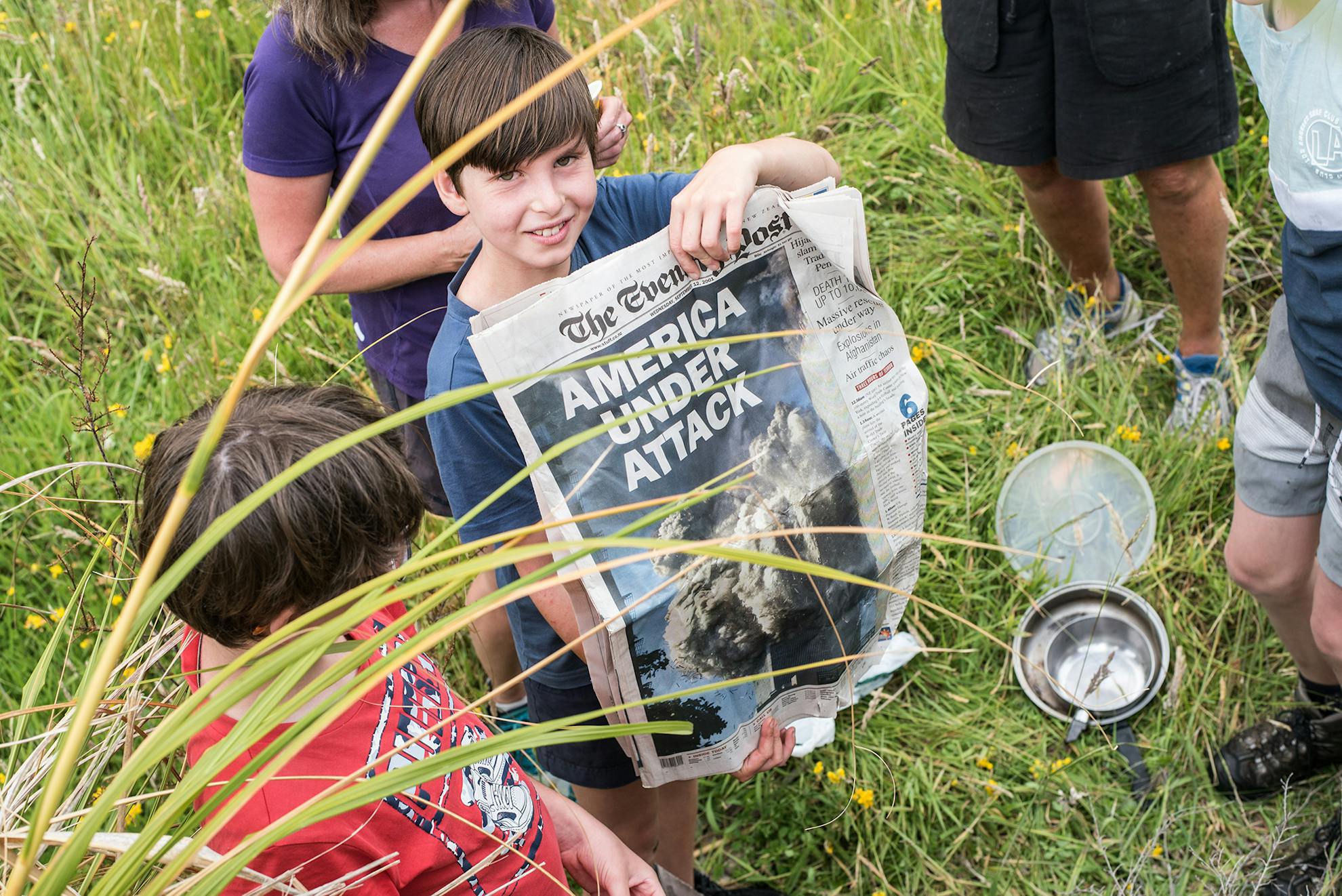
The atmosphere of any hut changes on any visit depending on many variables: who’s staying there, what the weather is like, how you’re feeling. But you don’t actually need a new hut to foster a new experience. I’ve found that huts I revisit don’t often look or feel like I remembered them. They are new each time. The famous saying goes that you never cross the same river twice. But it’s more likely you’ll never visit the same hut twice, even if it is the same hut. This tramp more than any other brought with it a sense of renewal. There were new discoveries and new experiences around every corner, even if we were going over old ground.
On our first night, we had a party. Miles was turning 10. We strung streamers from the walls, blew up balloons and prepared the birthday cake. We sat around the outdoor fire in our sleeping bags. The sky faded deep blue to black and the fire crackled and shot out specks of embers that blazed intensely for a second then burnt out in front of our eyes like shooting stars. The bush faded away to nothing and the whole world contracted until it was just the glowing fire-lit faces of our family, silent for the first time all day, the only sound the rustle of the river and the occasional hoot of a ruru.
Mist perched on the canopies in the morning. The great thing about lay-days is you can get properly acquainted with your surroundings rather than rushing to pack up and leave. A few of us spent the morning trying to find an unofficial track up a spur called High Ridge, which gives alternative access to Powell Hut. We crossed the swingbridge over the Waiohine but instead of following the track up Totara Creek, we turned left and picked our way through the bush looking for clues. We found something better. A faint track led us to the ruins of what must have been an old bridge across the Waiohine, a few hundred metres upstream of the current swingbridge. We crossed the river and found the corresponding ruins on the other bank. When had this bridge existed and what happened to it? I’d never heard of it.
After returning from the tramp, I asked around and got the answer courtesy of Tararua tramping legend John Rhodes, who found a reference to the bridge in a 2002 book written by tramper and author Peter Jagger. The 90m suspension bridge was built by the army in 1960-1961. The bridge lasted less than five years. In 1965, it was destroyed by gale force winds and ended up in the river. It was replaced initially by a cableway and finally by the bridge that swings proudly today.
Our afternoon excursion took us back through the golden flats then across the Waiohine to Sayer Hut, my favourite hut in the ranges. Built in 1909, it’s the oldest remaining hut in Tararua Forest Park, lovingly maintained by the New Zealand Deerstalkers Association and glowing with rustic character. If I had my way, we would have stayed here – as I have many times before – but with only six bunks it didn’t quite have the occupancy for our sprawling party. Instead, we lit the outdoor fire, lay in the sun, cleaned the jaunty ‘SPEEDBOATS’ sign that hangs under the gable, before preparing the sports field for cricket.
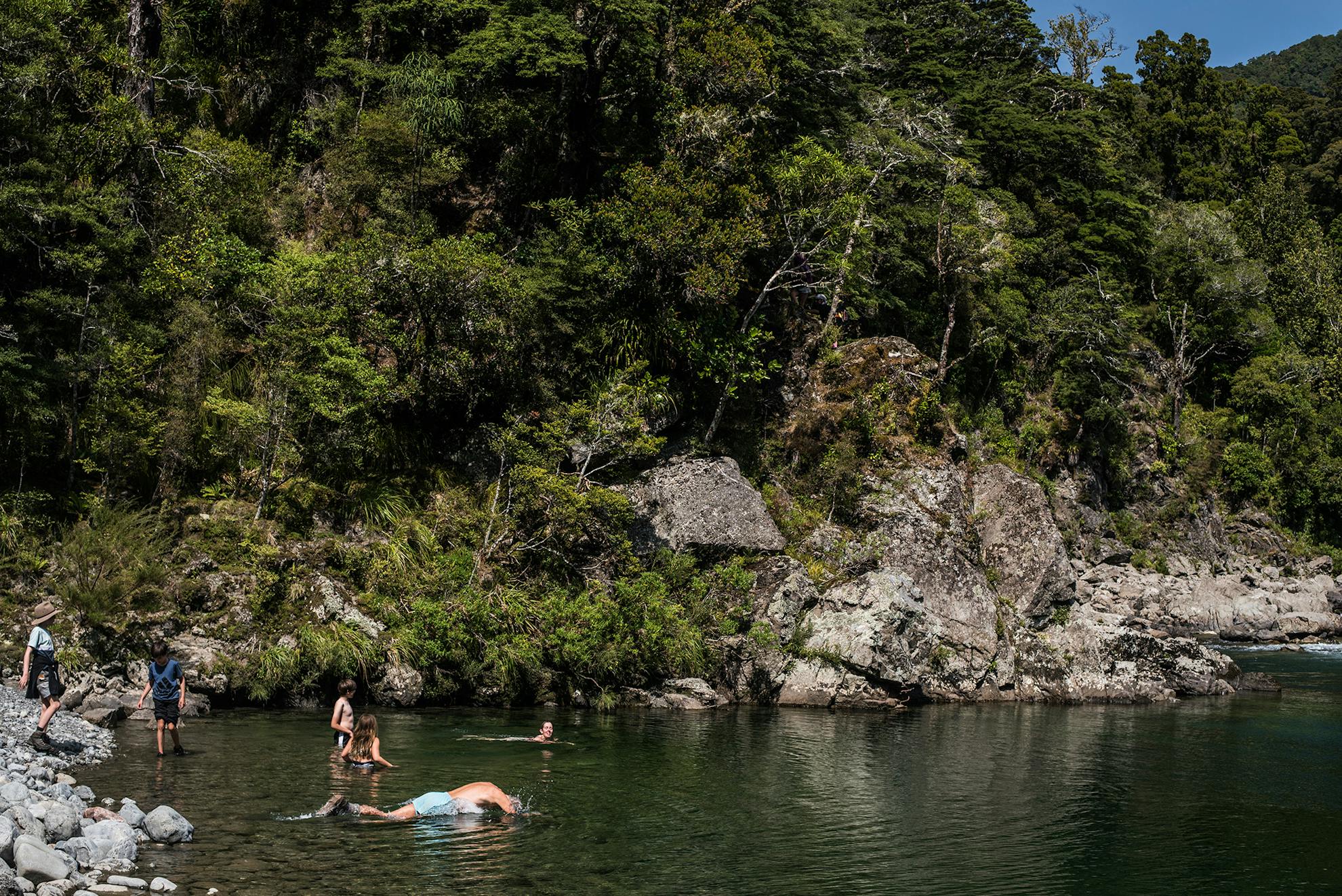
Yes, cricket. I had tramped in with a plastic cricket bat strapped to my pack, so of course I was determined to use it. It’s fair to say the groundsman had curated a green wicket. The grass was about three feet high. We improvised a roller from a log and the game got underway. A stunning hook shot sent the ball flying for six into the deep undergrowth, and it was during the hunt to retrieve it that the blue barrel was unearthed.
We found no sure answers as to its provenance during the tramp but an explanation was offered by Wilderness roving editor Shaun Barnett, who says he’s almost certain the cache would have been planted by a Palmerston North tramper named Tony Gates, who died in 2013 and who was known for stashing supplies near huts he liked. “I recall him telling me he had one near Sayer Hut,” Barnett wrote in an email, adding, “Tony would not have been overly worried about food being past its use-by date!”
So, in a sense, the blue barrel was a time capsule. I’m glad we left it there, stuffed with provisions, each packet of noodles and can of baked beans telling the story of a colourful and courageous tramper who came here, liked what he saw and yearned to come back for a different view of a familiar world. I know the feeling.
- Distance
- 10km
- Grade
- Easy
- Time
- Waiohine Gorge to Totara Flats Hut, 4-5hr
- Accom.
- Totara Flats Hut (26 bunks), Sayer Hut (6 bunks)
- Access
- Waiohine Gorge Road end
- Map
- BP33
GPX File
- Totara Flats Hut (gpx, 7 KB)
GPX File
- Your device does not support GPX files. Please try a different device.





